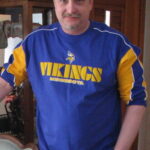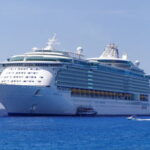Designing rudders as steering systems may be a great deal today but in fact, are nothing new. The word rudder literally means a paddle. The first rudders were used by the Vikings in their huge ships ages ago. Of course, since then, rudders have involved to make our lives easier and our sailing adventures a trip to heaven.
A rudder is a crucial part of a sailboat. Without the appropriate rudder you will not be able to steer your boat properly and the drag will be increased making a routine sail a dangerous cruise.
Rudders are categorized in two main types. There are the inboard rudders that are located under the hull and the outboard (also known as transom hung rudders) ones found on the stern of the boat. In addition, there come in various shapes. To choose the right shape, you have to consider the boat’s needs as well as your need for maximum speed. If you want to give a real boost to your sailboat, a custom section is better whereas for medium speed its preferable an aerofoil one.
Here are some different types of inboard and outboard rudders:
Spade rudder
A spade rudder is commonly found at fin-keel vessels. The biggest benefit is that it can rotate freely to any side. It can be easily steered as the rudder post inside the rudder itself is moved backwards, minimizing the water pressure as the boat turns. The only weakness of the spade rudder is its susceptibility to various objects found in the water. If one of them hits the rudder may lead to post bending. The post in fact holds the entire rudder and any damage on the post can actually trash the whole rudder.
Balanced Space Rudder
It is a different form of the above type as the rudder post is some inches aft to the rudder. This change allows the water pressure to balance among the rudder and the rudder post making steering an easy case.
Full Keel Rudder
This type is typically attached to the back of the keel while its propeller is placed among the keel and the rudder. The main advantage of a full keel rudder is the amount of strength and protection that offers. On the other side, it requires more energy to steer as the water pressure is to one side only.
Skeg-Mounted Rudder
Many manufactures prefer a skeg-mounted rudder as it is more liable. It stays save from harm from debris or other objects in the water. But, as its structure eliminates the equal distribution of water pressure, more power is needed to make it work.
Outboard Rudder
As the name indicates, an outboard rudder is placed outside the hull. The absence of a rudder post requires a tilt to manoeuvre it and not a steering wheel.
It can be easily fixed if damaged as there is no rudder post and thus, no hole through the hull. Despite that crucial benefit, an outboard ruder also lacks balance demanding more energy to steer it.
Every type has its advantages and disadvantages. The final choice is totally related to the size and type of your sailboat. Search for an expertise manufacturer and discuss your concerns. The proper rudder can totally boost your boat’s performance.
Sources:
1. http://sailing.about.com/od/typesofsailboats/ss/Ruddertypes.htm




